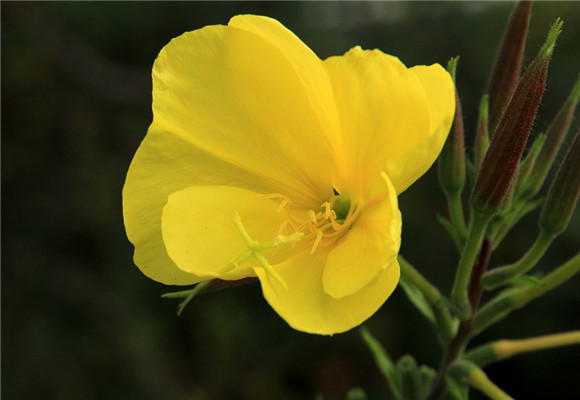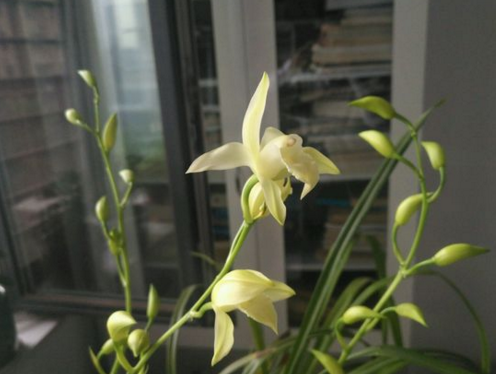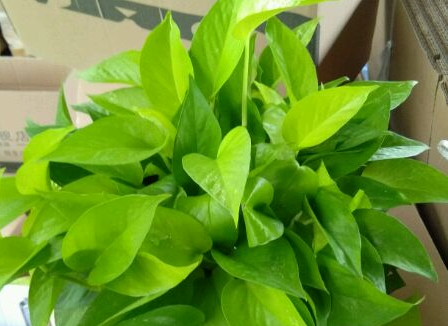Where does evening primrose grow? What's the effect? How to breed?
Evening Primrose (Evening Primrose) is native to North America (especially Canada and the eastern United States). It was introduced to Europe in the early stage and quickly spread to the temperate and subtropical regions of the world. So, where does evening primrose grow? What is the effect? How to breed it?

Where does the evening primrose grow?
Evening primrose often grows on open slopes along the road. Drought-resistant and barren, black soil, sandy soil, loess, young woodland, light saline-alkali land, wasteland, river beach, sloping land are all suitable for planting.
Second, what is the effect of evening primrose?
Evening primrose can dispel rheumatism and strengthen muscles and bones. The main wind-cold-dampness arthralgia; soft muscles and bones, promoting blood circulation and dredging collaterals; relieving wind and calming the liver; detumescence and sores. Main chest pain; apoplectic hemiplegia; deficiency wind internal movement; infantile hyperactivity; rheumatic numbness; abdominal pain diarrhea; dysmenorrhea; fox confusion; sores; eczema.
Third, how to raise evening primrose?
1. Land preparation and selection: Evening Primrose is strong, cold-tolerant, drought-tolerant, barren, light-loving and waterlogging-resistant. Bean stubble with fertile soil and good drainage should be selected, and melon stubble can be planted continuously. However, Evening Primrose can not be planted in plots with herbicide residues such as chlorosulfuron, dichlorosulfuron, Pustilon, and Guangmianling. Soil preparation bean stubble and miscellaneous stubble can be raked directly and ridged in autumn.
two。 Sowing time: sowing can be sowed in both spring and autumn, and the autumn sowing period is from mid-October to before freezing. If winter snow is heavy, autumn sowing is better than spring sowing, winter snow is easy to cause lack of seedlings and broken strips. Spring sowing can be carried out before sowing wheat and when the soil freezes for 2-3cm. Because of less sowing quantity, 60 kg diammonium per hectare is used as filler; if not, a certain amount of dry sawdust or fried wheat and rape can be added for sowing, sowing 1-2cm in depth and timely after sowing. The amount of seeds per hectare is 6 kg, and the seedling protection is 40-500000 plants per hectare. The density of sowing should not be too small, otherwise there will be branches and the maturity period will be inconsistent.
3. Field management: seedlings are very similar to weed seedlings before the expansion of the second pair of true leaves, so they can not be ploughed and weeded, but only after the second pair of true leaves are unfolded. When the seedlings grow to 5 Mel and 6 leaves, Gramineae weeds can be used to kill the weeds. During the growth period, 2 times of ploughing hoe and 2 times of intertillage should be carried out, the shovel must stop before flowering, and the first ploughing hoe and middle ploughing should be carried out when the seedlings cover the ridge. Two artificial weeds were pulled out in late July and early August, so that there were no weeds exceeding the plant height of evening primrose in the field.
4. Evening primrose diseases and insect pests: after the prevention and treatment of erosion disease, the root of the plant gradually changed color and erosion, the leaves wilted and dried up, and then the whole plant withered. Prevention and control methods: 1% lime water can be used, or 1500 times of 50% topiramate can be used, or 1000 times of 75% chlorothalonil can be irrigated.
5. Harvest: evening primrose is an infinite inflorescence, the fruit continues to mature, usually the bottom pod has 4 yellowing, and to crack, it is the best harvest time, the specific time is in the middle and late September, the precocious fruit will dry and crack. The seeds scatter by themselves. Can be cut and dried by manual or sun-cutting machine, after drying for 7 days, pick up or manually take off (beat) with a joint harvester, the harvested seeds are suitable for grain cleaning machine classification, remove impurities, fill bags for storage or sale when moisture is below 11% after drying.
Time: 2019-04-11 Click:
- Prev

Where does Jianlan grow? How many times a year do you bloom? How to maintain it?
Jianlan, produced in China, is widely distributed in Southeast Asia and South Asia, as far as Japan. This flower is cultivated and has high horticultural and herbal value. So, where did Jianlan grow? How many times a year do you bloom? How to maintain it? Where does Jianlan grow? Orchids generally grow on the hillside and valley walls of deep mountains and valleys
- Next

Does Green Luo prefer Yin or Yang? Can it propagate by cuttings? What are the specific methods?
Green pineapple is a common indoor potted plant, which has strong entanglement, developed air root and can be cultivated in water, so do green pineapple like yin or yang? Can it propagate by cuttings? What are the specific methods? Does Green Luo prefer Yin or Yang? Green pineapple is a negative plant, which likes scattered light and is more shade-tolerant. It lives when it comes to water.
Related
- Fuxing push coffee new agricultural production and marketing class: lack of small-scale processing plants
- Jujube rice field leisure farm deep ploughing Yilan for five years to create a space for organic food and play
- Nongyu Farm-A trial of organic papaya for brave women with advanced technology
- Four points for attention in the prevention and control of diseases and insect pests of edible fungi
- How to add nutrient solution to Edible Fungi
- Is there any good way to control edible fungus mites?
- Open Inoculation Technology of Edible Fungi
- Is there any clever way to use fertilizer for edible fungus in winter?
- What agents are used to kill the pathogens of edible fungi in the mushroom shed?
- Rapid drying of Edible Fungi

